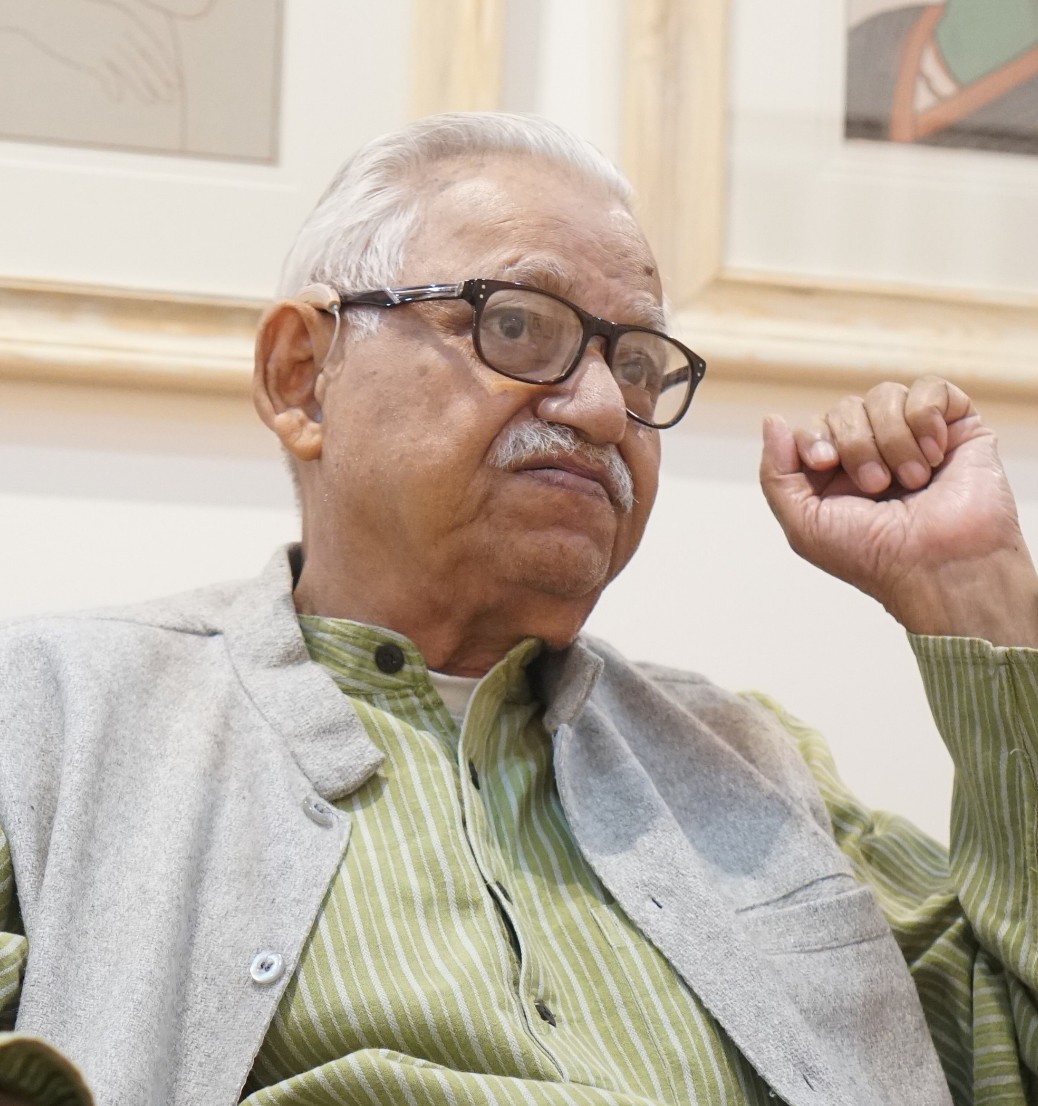
Lalu Prasad Shaw
ArtistBorn in Siuri, Birbhum, in Bengal in 1937, art was all around Lalu Prasad Shaw. From his home, he could see the Malakars work their magic on the Sholapith craft, one among the traditional handicrafts of Bengal. He would keenly watch them work on sculpted idols of Goddess Durga, the puja adornments as well as the pata art to place in front of the idol. Shaw who soaked in the art on his way home, soon began to explore colours and make paintings on his own. Shaw’s art master in school, Pinakinath Bhattacharya was an early influence and Shaw remembers the trips outdoors to paint. Abanindranath and Gaganendranath's works which ruled the Bengal art scene which used to appear in the monthly Basumati, Prabasi and Modern Review were also copied by Shaw in his adolescence. He was admitted at Indian College of Art & Draftsmanship, Kolkata in 1953 but after a few months he left and joined the Govt. College of Art & Craft, Kolkata in 1954 where he learned under Ajit Gupta, Gopal Ghosh, Rathin Maitra, Anil Bhattacharya and Maniklal Bandopadhyay. Shaw’s later works on tempera has glimpses of the influences of Ajit Gupta, who was Shaw’s favorite at the institute. After graduation, Shaw taught art for 18 years covering painting in watercolour, pastel and clay modelling in various schools of West Bengal. Later, he taught graphic art at his alma mater and eventually moved to Kala Bhavan in Shantiniketan. Shaw is known to have deftly captured the middleclass life of Bengali men and women, the bhadralok. Mainly working in tempera and gouache, with adept economy of lines, he painted the lives of babus and bibis in portraits that brim with an element of hidden drama. These works reveals Shaw’s fascination with the pre-independence Company School of art, the traditional Kalighat Patachitras, and the Ajanta cave paintings. Shaw has professed his admiration for the artist Jamini Roy and was inspired by Roy’s borrowings from Kalighat paintings. Shaw’s highly stylized paintings reflect his interest in patterns, where each minute detail is called in for its significance, reminding one of the miniature portraits of the past. It is while working at the Kala Bhavan, at the photography studio in Santiniketan, that he had observed closely the Bengali babus who come in dressed in dhotis, and the ladies decked up in their best saris pose with flowers or a mirror. They soon became his muse, and he is best known for his images of babus and bibis, depicted in tempera. The local attires which includes the unique way Bengali’s tie their saris and dhotis, the ubiquitous umbrella in the hands of men on the road, the distinctive hairstyles and adornments, even the plantains in the background, all make Shaw’s depiction of the middle class life, a very intimate portrayal. It is no wonder that Shaw’s early works in this realm, like ‘Asha Lata’ which captures locals during Shantiniketan’s winter fair, are still admired
